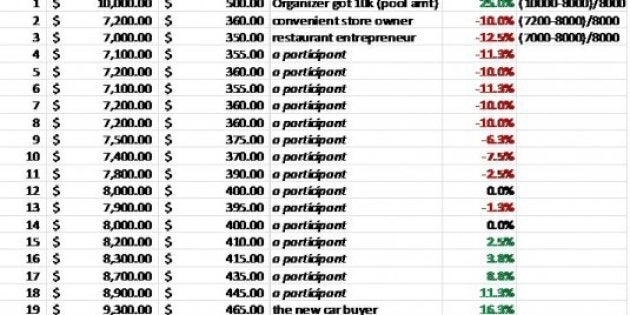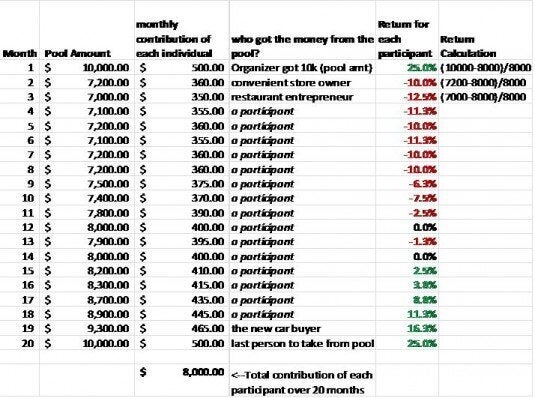
I knew him for a while. He landed in Canada 28 years back without a penny. He got a job in the kitchen of a restaurant immediately and earned minimum wage. Any extra money he saved, which turned out to be a lot as he was sharing an apartment with others like him and ate at the restaurant where he worked, he would put towards a Seettu. He also worked part-time at a full-serve gas station filling gas in extremely cold weather. Some gentle souls would give him generous tips and he would dutifully put that extra money into Seettu.
He depended on Seettu to meet emergency needs. When his wife and children arrived after he sponsored them, he used the money from Seettu to fund their settlement expenses. Some of the money went towards a down payment for his house and car. As time has passed, his kids have grown up and moved out of the house and he has higher disposable income now. He still participates in Seettu. Not to meet emergency needs but to make some profit. Welcome to the intriguing world of Seettu, which can be a saving vehicle for some, an emergency lump sum payer for others and profit-maker for another.
I grew hearing about Seettu. My extended family used it in some form or other; I would often hear uncles at parties talking about the monthly payment coming up. I did not know much about it, how it worked nor was I interested in finding more about it. Then, some time back, when I was thinking about vehicles with low correlation to the stock market, a light bulb went off in my head. I started to research the world of Seettu.
Here is one example of how a $10,000, 20-month Seettu with 20 participants, including an organizer, would work. A group of 20 people from different rungs of the economic ladder, with different monetary needs, would get together and contribute $500 each to a pool for a total of $10,000 in the first month. The first month's pool would go to the organizer. In the second month, the rest of the 19 people would bid for the pool.
Assume a convenience store owner is in need of money because of a severe winter storm. He communicates his bid for $7,200 in the second month, the lowest amount among all the bids, and he wins this month's pool. Each of the 20 participants will have to pay $360 this month ($7,200 ÷ 20 = $360). The next month a participant wants to start a restaurant business and wants to top up her startup capital. She bids $7,000 and wins making every one contribute $350 ($7,000 ÷ 20) in the third month. This process continues every month and on the 19th month a participant bids for $9,300 as he has been contributing diligently to the Seettu to buy a new car. On the 20th month, the last leg, everyone contributes $500 and the lump sum of $10,000 goes to the last person.
The table below shows the monthly payments and the returns for each individual based on a total individual contribution of $8,000 over 20 months.

In the example above, each participant contributed a total of $8,000 over a 20 month period. However, each participant received a different amount from the pool. So, who won in this Seettu? Everyone. To understand Seettu, you will have to forget about the conventional way of thinking about money and the time value of money. If you look at the rate of return of each participant above, it would appear the organizer got the highest return, followed by the last person and the person who lost was the restaurant entrepreneur.
The bigger picture is different: banks would not easily lend money to an unproven restaurant entrepreneur. Seettu acts as an alternative lender without which she would not be able start her restaurant business and the 12.5 per cent interest she paid is still lower than the rate charged by alternative lenders. For the person who bought the car, it was a way of forced monthly saving to buy a vehicle in the future and, to top of it off, getting a good return of 16.3 per cent over the period. For the last person it was a way to earn a profit with her disposable income.
In the case of deadlocks when no one wants to take the pooled capital, as waiting out until the end provides a higher return, the organizer would hold a draw to pick the winner. To keep the math simple, I did not incorporate any re-investment of capital in the table above. There are different types of Seettu and the one mentioned here is a common one.
More From This Author: